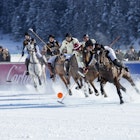
Aug 3, 2023 • 7 min read
Sep 25, 2019 • 7 min read

The steel-plated tunnel leading into Bunker 42 © Naeblys / Shutterstock
The Cold War has been over for almost three decades, but the geopolitical tension between Russia and the West continues today. There’s no Cold War museum in Russia as such, but there are a few museums around the country exploring the themes of the uneasy relationship between the East and West throughout the 20th century. Here are the museums that will satisfy both Cold War buffs and those interested in Russia’s role in contemporary world affairs.
Bunker 42, billed as the only Cold War museum in Russia, is located in a bunker 65m underground and is devoted to the standoff between the USA and the Soviet Union. A staircase equal in height to an 18-storey building is followed by a steel-plated tunnel leading into the bunker proper. It was designed to withstand a major nuclear bombing and was built to provide shelter for Joseph Stalin in the event of nuclear war.
{
"url": "political-history-and-military-museums-in-russia"
}Stalin never actually set foot in the bunker as it was only finished in 1956, two years after his death. During the Caribbean crisis of October 1962 general staff meetings took place in the conference hall of the bunker. In 1986 the bunker was renovated and turned into a museum. Apart from offices and living quarters with a dummy of Stalin, there are also various historical exhibits devoted to the Cold War, mock-ups of the first nuclear bomb and various ballistic missiles.
Part of the Museum of Political History in St Petersburg used to belong to the famous ballet dancer Mathilda Kshesinskaya, a lover of Nicholas II, before the Bolsheviks headquartered there for a brief period of time. Naturally, the museum starts with an exhibition about the 1917 Revolution and continues with detailed history of the Soviet Union, including Stalin’s purges, WWII, the Thaw, and dissidents, as well as contemporary Russian politics, presented in a surprisingly unbiased manner. Be sure to check out the meticulously recreated apartment interiors of various social groups in the USSR.
The Central Museum of the Armed Forces is very up-to-date and already has an exhibit devoted to the Russian military intervention in the Syrian Civil War, complete with oil paintings of questionable quality and a variety of memorabilia. There is also an exhibit on the Russian–Georgian war of 2008 dubbed as “peace enforcement” and a hall devoted to the two Chechen wars.
If you are more into Soviet history, there are plenty of exhibits on the atomic bomb and intercontinental missile development, as well as Soviet involvement in several wars. Look for posters proclaiming the USSR’s moral superiority over the USA, and the remains of an American U2 spy plane shot down near Yekaterinburg in 1960. Take a walk in the courtyard, which is lined with tanks, helicopters, fighter planes and even intercontinental ballistic missiles.
The Museum of Contemporary History of Russia used to be called the Museum of the Revolution, and pre-1917 it was a prestigious gentlemen's establishment called the English Club. Apart from admiring sumptuous 19th-century interiors and watching President Vladimir Putin’s 2018 inauguration on repeat, you can check out exhibitions devoted to life after Stalin’s death, the Thaw and the fate of dissidents, including a separate section on Nobel Prize–winning writer and activist Aleksandr Solzhenitsyn.
{
"url": "political-history-and-military-museums-in-russia"
}The propaganda only starts in earnest when we turn to the time of perestroika (restructuring) and the 1990s. The video devoted to this period is tellingly called The Time of Trials, while Putin’s era is characterized as the “overcoming of the 1990s crisis.” There’s a multimedia panel on Russia’s foreign policy and a hall devoted to the latest achievements in technology, including in the military. In this last hall you can be guided by a friendly robot, moving from one exhibit to the other and explaining everything in Russian.
Commonly known as the Yeltsin Center, this unique public space contains a contemporary art gallery, an independent bookstore, a theatre, a concert hall, several shops, cafes and even a nightclub. But the main attraction is the history museum, the only one in the country specifically addressing the perestroika (restructuring) era of the Soviet Union and the 1990s under the first President of independent Russia, Boris Yeltsin.
Some of the museum highlights include a reconstructed reality of the early 1990s, when state-run grocery stores stocked just cans of birch juice, a replica of Boris Yeltsin’s apartment in Moscow on the day of the August 1991 coup d’état, and a life-size bus that Yelstin used to take during his days in Moscow City Hall, to communicate with regular Muscovites. It’s no accident that this museum is located in Yekaterinburg since Yeltsin was the region’s governor in the 1970s and '80s.
The Jewish Museum is probably the best multimedia museum in Moscow, covering the history of Jews in the Russian Empire, Soviet Union and contemporary Russia. The focus is on the 20th and 21st centuries, including the role of Russian Jews in the revolution, post-war anti-Semitism and hopes connected with the creation of the State of Israel, the Thaw and the massive exodus of Russian Jews from the USSR in the 1970s. There are also excellent temporary contemporary art exhibitions, mostly related to Russian avant-garde art.
The small Sakharov Center, located in a little park off the Garden Ring, has an exhibition devoted to the life of dissident scientist and Nobel Peace Prize–winner Andrei Sakharov, including his part in developing Soviet nuclear capability. Sakharov came to regret his role and thought that anti-ballistic missile defense increased the likelihood of mutual annihilation.
The rest of the museum is devoted to the Gulag system of prison camps and political repressions after Stalin’s death, the Thaw and samizdat (underground publications). The exhibition consists mostly of photos, propaganda posters and prisoners’ personal items sprinkled with pertinent quotes from Lenin, Trotsky and Stalin, as well as Soviet jokes.
Another museum that talks about the nuclear bomb development in Russia is Moscow’s Polytechnical Museum. While its original building is still being renovated, Polytechnical Museum moved its exhibition showcasing the greatest achievements of Russian science to VDNKh. There’s everything from the first radio and TV to a nuclear bomb and plans for future Mars settlements. Nuclear bomb development is in a separate section, with a mock-up of a nuclear test.
{
"url": "political-history-and-military-museums-in-russia"
}Space travel was considered one of the biggest Soviet/Russian achievements so there’s not one but two space museums in Moscow. Thankfully, both are within walking distance of each other. Cosmonautics Museum is located in the base of the awe-inspiring 'Monument to the Conquerors of Space', a masterpiece of Soviet modernism.
Visitors are greeted by an installation with purple lights and a huge statue of Yury Gagarin – a selfie magnet. There are many genuine articles, including the taxidermically-preserved space dogs Belka and Strelka, a life-sized mock-up of Mir station and the first Soviet rocket engine. There are also models of American and Chinese rockets, not just Soviet and Russian ones, so you can study and compare the details.
The VDNKh Space Pavilion, or Space and Aviation Centre, is part of the VDNKh park. It’s a palace-like building with an elegant glass cupola, reopened in 2018 after a lengthy renovation. Space Pavilion uses a lot of multimedia panels with timelines of various Soviet achievements. The museum explains that the Space Race was an indispensable element of the Cold War, so some of the equipment was dual-purpose, with a capacity to carry weapons.
One of the main attractions is an enormous rotating globe with video mapping and a 5D cinema inside. At the VR booths visitors can experience a walk on the moon or go on a tour to other planets. The re-entry capsule on display was used as recently as 2002.
Four great day trips from Moscow
Make the most of your travel with sightseeing tours and activities from our trusted partners.
{
"url": "political-history-and-military-museums-in-russia"
}

Aug 3, 2023 • 7 min read




Mar 25, 2021 • 3 min read



Sep 9, 2020 • 2 min read

Apr 7, 2020 • 5 min read